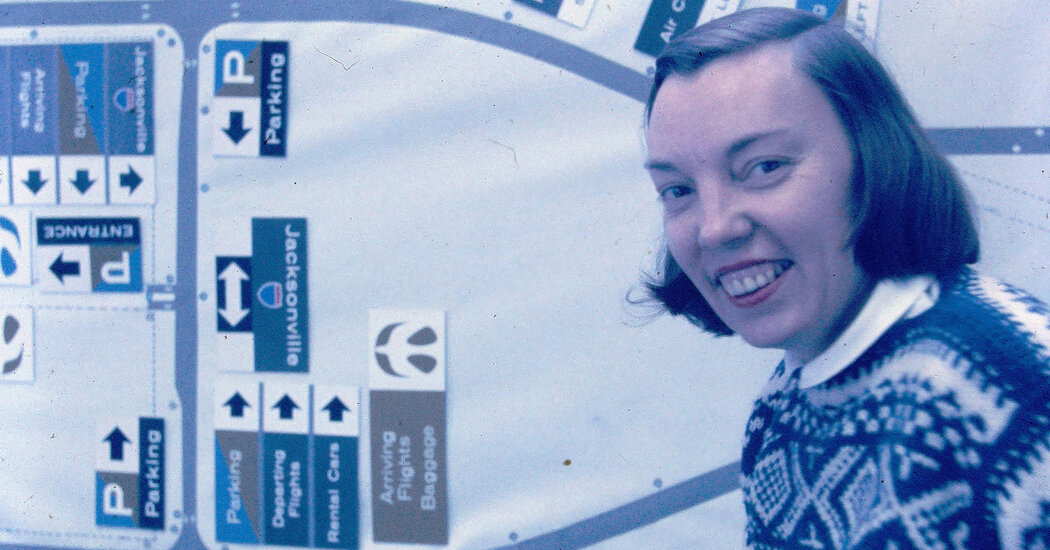In the mid-1950s, when Jane Davis Doggett was earning a master’s degree at Yale’s Graduate School of Art and Architecture, she was surrounded by students and professors who were focused on the arenas, malls, medical centers, transit hubs and other huge projects that were coming to define America’s postwar era of prosperity and urban renewal.
Ms. Doggett had a different interest.
“Projects were new, complicated and big,” she recalled in a 2013 interview with the designer Tracy Turner posted on the website of the Society for Experiential Graphic Design. “It occurred to me to think about the person coming to these behemoths and what the human scale should be and how this person would find his way and make use of the place.”
The field she began working in didn’t really have a name at the time but is now called environmental graphic design. She became one of its founding figures, coming up with systems to help people navigate complex spaces, a specialty called “wayfinding.”
Airports were a calling: In Miami, Houston, Baltimore and several dozen other cities, Ms. Doggett used color coding, symbols, uniform signage and other touches to help travelers find their way around airports that would have otherwise been more intimidating.
“I didn’t envision my role as herding people,” Ms. Doggett told a Yale alumni publication in 2021. “Rather, I saw it as communicating to people the choices offered for their individual selections, with clearly defined routings of how to get there.”
Ms. Doggett, whose work won assorted awards over the years, died on April 10 in hospice care in Sun City Center, Fla. She was 93.
Her nephew, Bob Lochte, who with his wife, Kate Lochte, had been caring for her for the past three years, confirmed her death.
Ms. Doggett established her own firm, Architectural Graphics Associates, based in Connecticut, a few years after receiving her master’s degree in 1956, and for decades she was one of the few women working in environmental design.
In 1975, when The Hartford Courant asked her if she had ever encountered any obstacles because of her gender, she had a simple answer. “It’s sort of like asking Henry Kissinger, ‘Did you encounter obstacles working for détente?’” she said.
Years later, speaking to The Tampa Bay Times, she elaborated on what it was like trying to get her ideas accepted by a roomful of men.
“As long as I could prove it, I could persuade them,” she said. “It was not easy being let in. It was my…
Click Here to Read the Full Original Article at NYT > Travel…
